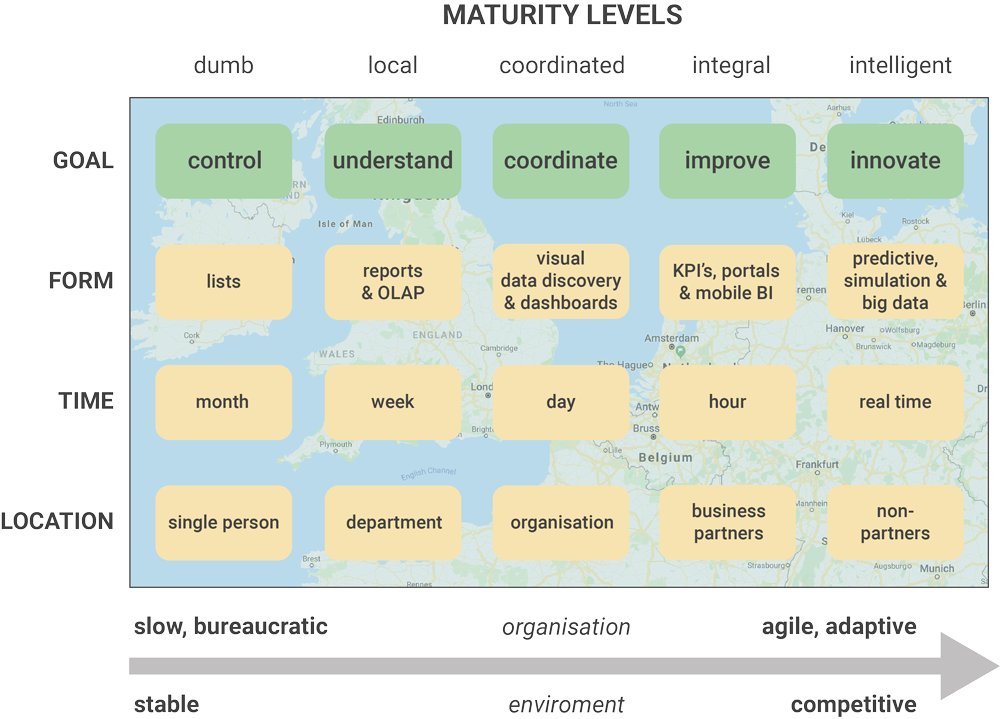

It’s a fancy way of saying it automates uncovering insights. Augmented AnalyticsĪugmented analytics is one of those terms that seems to confound everyone. When considering a business intelligence software, make sure you’re able to see what kinds of charts, maps, and graphs they have available. This helps businesses turn their data into a story and understand trends and patterns. Data visualization is the use of visual elements to bring data and information to life. This feature is a key component for most business intelligence tools. Regardless of their agenda, these are the top features to look for when evaluation your business intelligence software: Data visualization Features of Business Intelligence Toolsĭifferent organizations will have different needs from their business intelligence tools, depending on their industry. Machine learning, natural language query, and predictive technologies also enable business users to quickly produce unbiased stories and reports with technical training, allowing everyone to focus on higher-value strategic decisions. It’s worth noting that this evolution didn’t replace data professionals, it just freed up those teams to perform more advanced work. Users can filter, sort, analyze, and visualize data to extract insights with intuitive interfaces that make common data tasks easy to perform. This removes the bottleneck of having to go to a data team with a request users of self-service BI have intuitive interfaces so that common data tasks are easy to perform. This approach enables anyone with permission to directly access and analyze company-wide data. Those who conducted the analysis of the data were at a premium because their skills were highly specialized.īut this created a lot of inefficiencies, bottlenecking data and delaying decision making.Įnter self-service BI.
ASPECTS OF BUSINESS INTELLIGENCE STRATEGY PROFESSIONAL
Traditionally, business intelligence – the analysis of data, calculation of metrics, and compilation of reports – was strictly in the realm of a data professional or team. But historically, this wasn’t always the case. The short answer? Everyone in the organization.

Tracking potential customers through a sales pipeline.Monitoring the organization for problems and identifying root causes.That’s why having the right business intelligence tools are important. Their efforts are often limited to spreadsheet-based analytics and stand-alone projects that lack central guidance or leadership. Unfortunately, according to Gartner, more than 87% of businesses have low analytics and business intelligence maturity. Teams can see historic patterns to help stakeholders gauge the health of their organization and get a real in-depth understanding what’s going on in your business. This data is translated into insights that the company can use to understand its business processes, make informed decisions, and pivot their business strategy confidently.Ī company working with effective business intelligence tools will have data that is accurate, complete, and organized. Business intelligence systems helps companies by surfacing and analyzing data across the entire organization. Why is Business Intelligence Important?īusinesses face an ever-increasing flow of data and are challenged with gaining insight from enormous data lakes. This helps fuel decision making, increase operational efficiency, and enables businesses to remain agile to adapt to market changes. Businesses can use this information to get a 360-dgree view of their company. A lot.īusiness intelligence is a set of methodologies, processes, applications, and technologies that transform raw data into meaningful and useful insights. The definition of business intelligence may have remained (somewhat) the same over the last 50 years, but the technology, and how businesses use it, has changed.


 0 kommentar(er)
0 kommentar(er)
